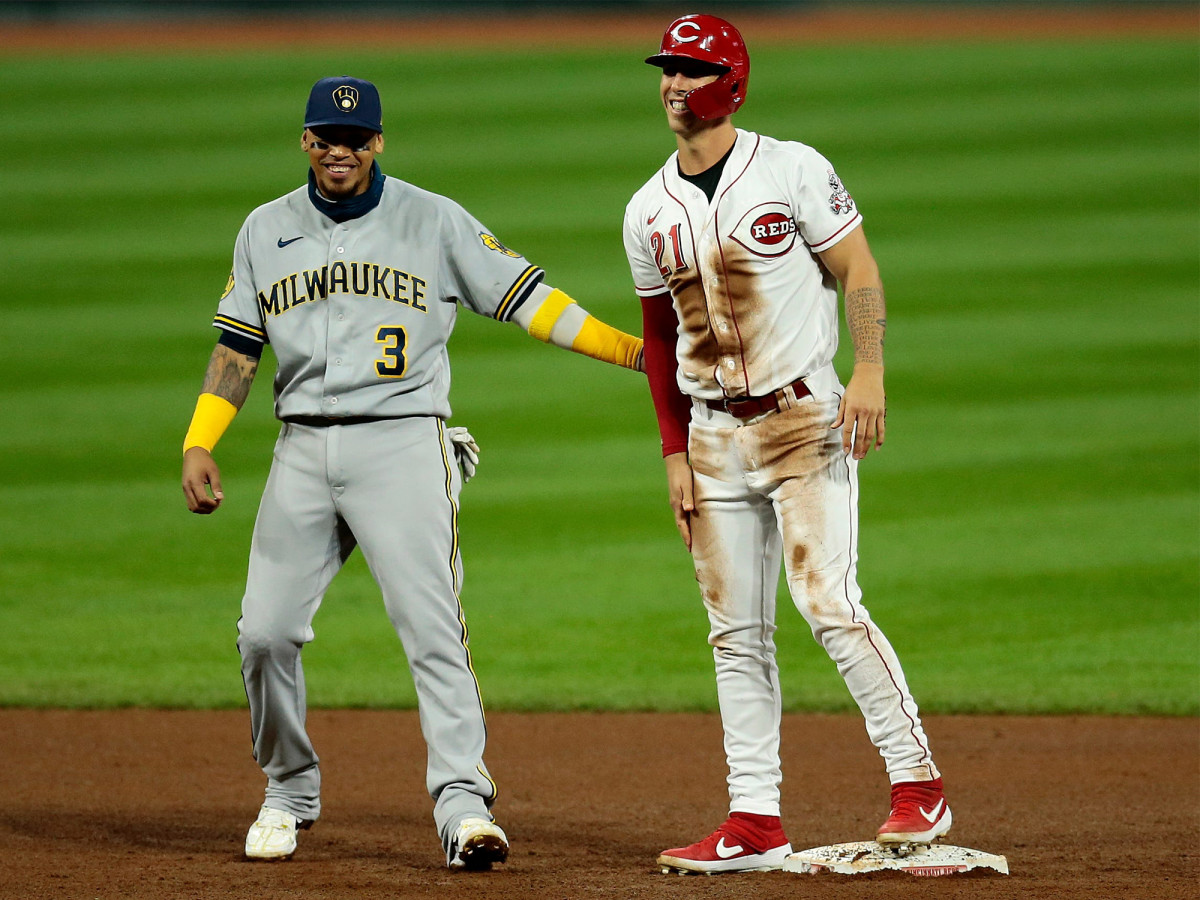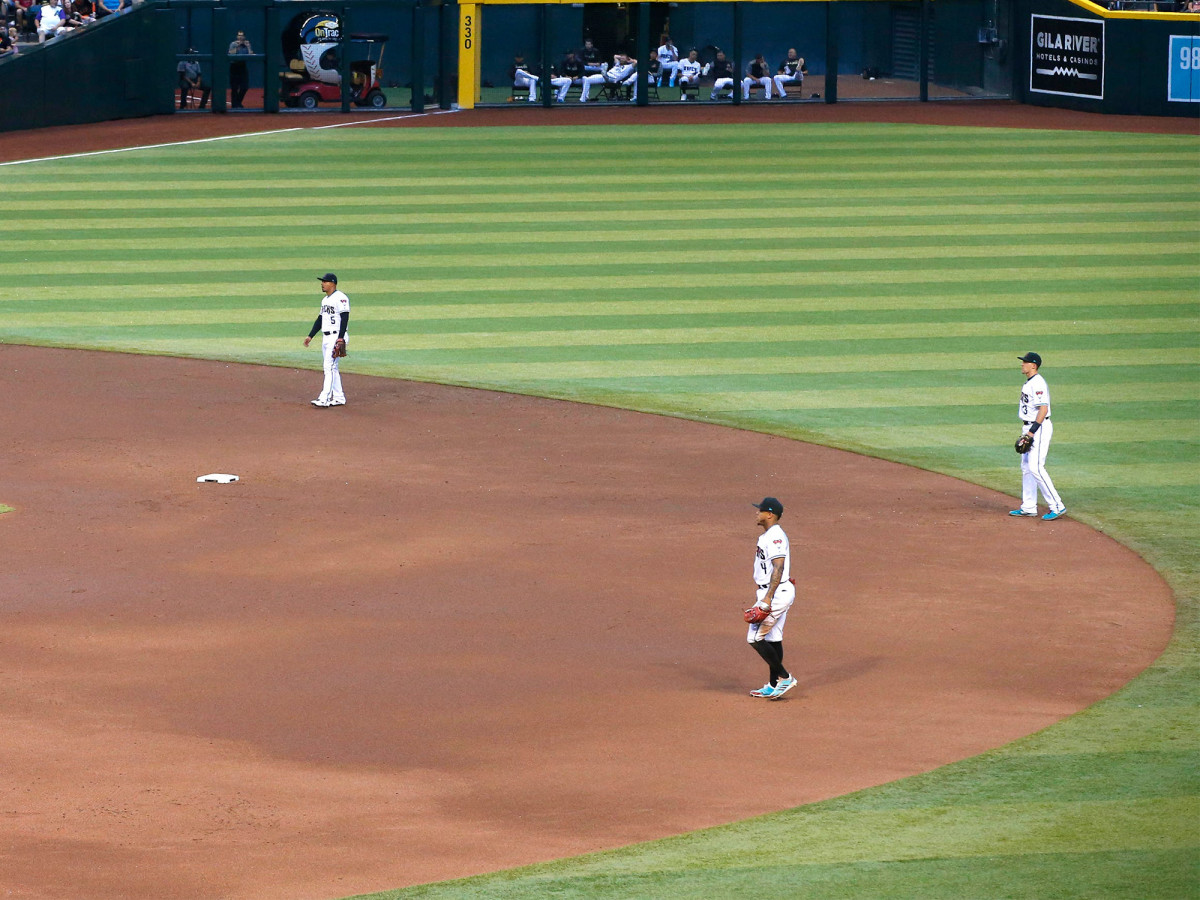The Nine Big Changes Coming to Baseball in 2021
What’s new in baseball this year? Plenty, starting with the actual baseball. There are also massive changes being tried in minor league baseball as MLB gets serious (and transparent) about how to modernize the game.
Michael Hill, senior vice president of on-field operations, hosted a seminar with broadcast partners this week to highlight the changes coming to major and minor league fields. The minor league changes are being spread among different leagues so their effect can be isolated, rather than lost in accumulation.
Here’s a look at the key changes in the majors and minors, and a forecast of when the minor league experiments might be adopted by the owners and players in big league games.
VERDUCCI: The Future of Baseball Is at Stake in 2021
1. A Less Lively Baseball
Where: MLB
Reacting to changes in ball flight over the past few years, a committee of scientific experts recommended narrowing the gap in the specifications of the official baseball (i.e., size, weight, coefficient of restitution, or COR). Many of the baseballs were playing to the “hotter” end of that gap. This year the baseballs are designed for a COR in the middle of the narrower spec gap—essentially eliminating baseballs at the “hot” end of the old gap. MLB says Rawlings achieved that goal by loosening the tension of the first wool winding.
How will it play? First, forget anything you saw in spring training. MLB says teams were using 2020 baseballs for virtually all of spring training. The new baseballs are 100% in play starting with Opening Day.
The goal: The 7-8-9 hitters won’t be hitting as many opposite field bombs. That should incentivize a) hitters putting the ball in play and b) pitchers' pitching to contact rather than away from contact. The big home run hitters should still hit their home runs.
In 2019, 7-8-9 hitters slugged .397—third highest of all time (2006, 2017)—but they hit .238—99th all-time.
One more note about the baseballs: Five more ballparks will store them in a humidor, bringing to 10 the number of climate-controlled storage units among the 30 parks. Humidors don’t necessarily mean deadening the ball (as happened in Colorado, where the dry air would take moisture out of normally stored boxes of balls). The goal is to achieve uniformity.
BACCELLIERI: Deadening the Baseball? MLB's Done It Before
2. Interference Rule
Where: MLB
This is the only new rule added at the big league level this year. If after a dropped third strike the umpire or batter inadvertently deflects the baseball—thereby impeding the catcher—the batter is out and runners are returned to their bases. This is a clarification to an existing rule that makes clear intent is not a consideration.

3. Extra-Inning Runner at Second Base
Where: MLB
Okay, it’s not new. But prompted last year by COVID-19 protocols to avoid long days at the ballpark, this one officially is here to stay. Extra-inning games last year ended in the 10th inning 69% of the time, up from 46% in 2017 through '19. With an instant rally in place, viewership on MLB.tv of extra innings as much as doubled in 2020 compared to 2016–19, according to MLB figures.
The rule brought needed strategy and action back to the game. It needs one more tweak: reset the lineup for each team in the 10th. The top of the lineup bats, regardless of where the ninth inning ended. (No. 9 hitter is the runner placed at second.) Let’s see the best hitters for each side decide the game. Think about it: Overtime in football and basketball is a complete reset. Why not baseball? If you knew Mike Trout, Fernando Tatis Jr., Mookie Betts and the like were going to bat in the 10th inning—rather than the randomness of the bottom of the order—I'd dare you to change the channel.
And as one executive who endorsed my idea said, “And the players should love it because it gives even more value to the players at the high end of the pay scale.”
4. Umpire Review Announcements
Where: MLB
MLB began to arrange plans last year for umpires to announce results of replay changes with NFL-style explanations over public address systems, but COVID-19 wiped out those plans. Umpires are on board and the plans are still in place, but COVID-19 protocols still are delaying the rollout. You might see such announcements in time for postseason play this year. If not, it should be a go in 2022.
Expert Playoff and World Series Predictions
5. Better Bases
Where: Triple A
This is such a great idea that it should have been in play for this season in the bigs. I have been yelling into the void for years about the hazardous workplace conditions that are the current bases. Too hard and took slick, especially when wet. Bases have shut down great players such as Bryce Harper and Trout, yet baseball and the union keep putting their players at unnecessary risk of thumb, hand, knee, shoulder and foot injuries.
The impetus for redesigned bases in the minors is to increase stolen-base attempts, but every MLB player should advocate for it for safety reasons.
The new base is 18-by-18 inches, which is three inches wider in each direction than the current base. MLB says its analytical work suggests what it calls the 4 ½-inch reduction between bases will result in a 1% increase in success rate of stolen-base attempts.
The best part? The bases are lower (2 ½ inches high rather than 3 inches), have a softer, textured non-slip grooved surface with “give” similar to a running track, and have pronounced corners that provide good push-off for the runner and feel for the fielder.
When in MLB: 2022

6. Restricting the Shift
Where: Double A
When the pitch is thrown, the four infielders must have their feet within the outer boundary of the infield dirt. Goodbye, Rover. Goodbye to 200-foot line drives to right field that become boring 4–3 putouts.
For now, it still means teams can shift; they just can’t play that flex prevent defense. MLB reserves the right in the second half of the season to go to the full-throttle banning of the shift, which would require two infielders on each side of second base.
When in MLB: 2022. Analytics hacked the game. Now the players understand they need to bring the game back to showcase their athleticism.
LAWS: 2021 Team Watchability Rankings
7. Step-off Rule
Where: High A
The pitcher has to step off the rubber to make a pickoff attempt. (We’re looking at you, lefties; no more of those hanging balk moves.) Again, the idea is to incentivize the stolen base. And wow, does it work.
When this rule was tested in the Atlantic League in 2019, stolen-base attempts per game rose from 1.02 to 1.73 and the success rate jumped from 75.5% to 80.9%.
Incentivizing stolen bases encourages excitement and a diversity of styles, opening the door to players who may feel left out of today’s game because they lack power.
There is also a rule in all of Low A to limit pickoff attempts to two per plate appearance. After two pickoff tries, the pitcher has to either go home or successfully pick off the runner. If not, it’s a balk.
When in MLB: Post-2022. This idea, while a good one, is not a priority.
8. 15-Second Pitch Clock
Where: Low A (West)
Nothing will make a bigger, immediate impact on making baseball more fan-friendly than the pitch clock.
When in MLB: 2022—maybe, and with caveats, such as only with the bases empty. Players have shown little appetite for it, but a game that currently gives fans one pitch ever 24.9 seconds needs this kind of help.
VERDUCCI: MLB Can't Wait Any Longer to Fix Its Pace of Play Crisis
9. Automatic Strike Zone
Where: Low A (two-thirds of games in Southeast)
The strike zone will be redefined from its three-dimensional “box” shape to a two-dimensional “window” that is flush with the front edge of the plate. The top line of the zone will be set at 56% of the batter’s height and the bottom at 28% of the batter’s height.
When in MLB: 2023 or later. The technology is great, but baseball needs to see how it plays out in real-game conditions. That’s why MLB’s Competition Committee will monitor results during the Low A season and adjust as it sees fit. The driving force is to lower the strikeout rate and get more balls in play. If the inelastic zone actually starts calling more strikes on the corners (the human-called strike zone is a more rounded one than a sharp rectangle), the committee can tweak the zone as it sees fit. It’s a good idea that simply needs more development time, especially at the higher levels.
